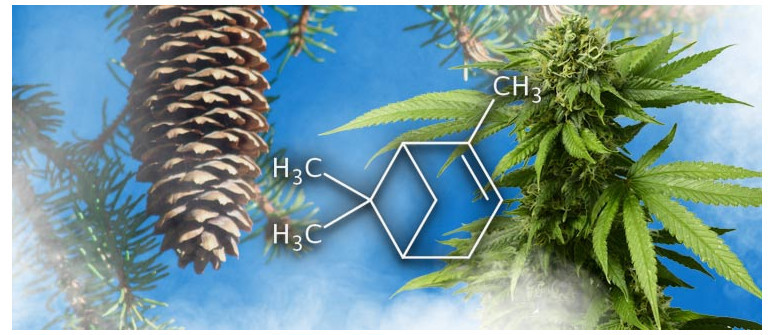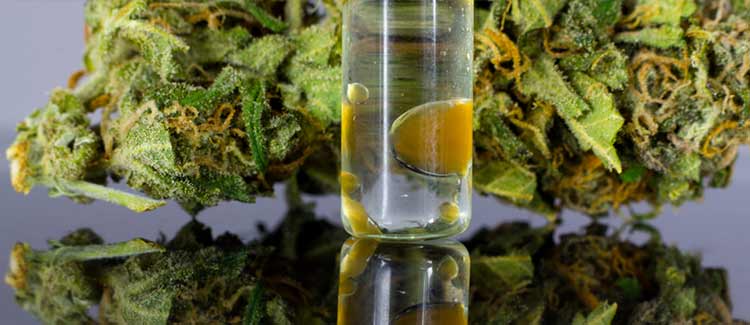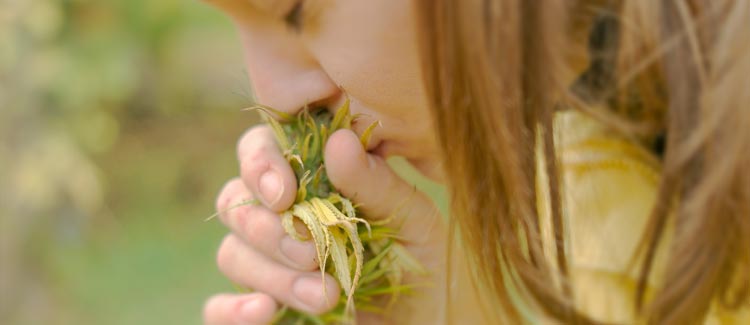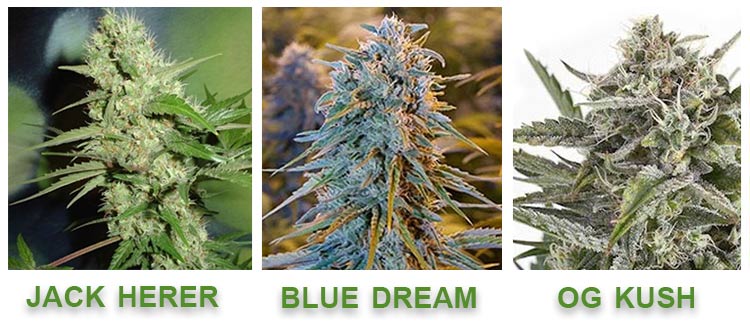Terpene profile: pinene

Pinene is one of the most common terpenes found in cannabis and other organisms. Read on to learn more about pinene and its effects.
Ever wonder why your weed smells so good? Well, it’s all thanks to terpenes. These tiny compounds (which make up the essential oils of the cannabis plant) can endow cannabis with musky, sweet, and even sour aromas.
Pinene is one such terpene. And, as you probably guessed, it gives weed that rich, fresh pine aroma. But did you also know that terpenes like pinene can directly influence the effects of cannabis?
WHAT IS PINENE?
Pinene is one of the main terpenes found in cannabis, and can also be found in the essential oils of pine, conifers, sagebrush, camphorweed, and more. It has natural insect-repellent properties, and is actually one of the most common terpenes found in nature, period.
Pinene can be located in many essential oils, including rosemary, orange peel, and eucalyptus. Most essential oil blends will also contain pinene, especially “forest” blends. Thanks to its potent aroma and the fact that is widely available in nature, you’ll also see pinene in many commercial products.
Pinene is often used to make perfumes, deodorants, and room deodorizers. It is also one of the principal compounds in turpentine, and has been studied as a potential biofuel. Pinene is also used in insecticides.
DOES PINENE HAVE MEDICINAL BENEFITS?

Terpenes, much like cannabinoids, can sustain a wide variety of beneficial effects on the body. Research also shows that different terpene concentrations may be what gives different cannabis strains their unique effects.
Pinene is a known anti-inflammatory compound. For example, a study on alpha-pinene published in the American Journal of Chinese Medicine in 2015 found that alpha-pinene suppressed specific protein enzymes involved in inflammatory processes.[1]
Studies have also shown that pinene may contribute to better sleep. A study published in the Journal of Molecular Pharmacology in 2016 tested the effects of pinene on the sleeping patterns of mice.[2]
The study found that by binding to GABAA receptors in the brain (a regular target for all kinds of prescription and nonprescription drugs), the terpene mimicked the effects of sleep aids like zolpidem. The researchers also found that pinene helped induce and enhance REM sleep in the mice.
Pinene is also found in high concentrations in mastic, an extract taken from mastic trees (Pistacia lentiscus). Mastic is often used in dental hygiene to fight tooth decay and gingivitis. It is also known as a natural antibacterial agent that can be used to kill harmful bacteria in the mouth that cause cavities and bad breath. Seeing as mastic contains up to 70% pinene, it seems reasonable to assume that the compound is largely responsible for mastic’s oral health benefits.[3]
There is also a solid body of research that shows pinene is a potent bronchodilator.
Bronchodilators help open up the airways in the lungs by dilating the bronchi and bronchioles. They are often used to treat and control asthma.
THE IMPORTANCE OF PINENE AND TERPENES IN GENERAL

It’s become really popular to examine the properties of the individual compounds in cannabis and assess them as such to better understand their effects and medicinal potential. And while that’s important, it’s also important to understand that the effects of these compounds can vary, especially in the presence of other cannabinoids and terpenes.
This phenomenon is known as “the entourage effect”, and really marks one of the pillars of better understanding cannabis. Once we realize the validity of the entourage effect, we can finally start to move beyond analyzing compounds in isolation, and instead start focusing on the plant as a whole.
Some sources claim, for example, that pinene can be a powerful, broad-spectrum antibiotic. Pinene is particularly effective against MRSA (Methicillin-resistant Staphylococcus aureus), especially in the presence of CBD and CBN.
The same site also claims that pinene’s effectiveness as a bronchodilator is improved in the presence of THC. Meanwhile, the terpene’s alerting properties might get lost in the presence of more sedative compounds (like myrcene, for example).
These are just a few examples of how pinene’s effects can be synergized with that of other cannabis compounds.
CANNABIS STRAINS RICH IN PINENE

As you’ve probably guessed, strains with fresh pine aromas will usually contain the highest concentrations of pinene. Below is a list of strains that tend to contain significant pinene content.
- Jack Herer: Jack Herer is a powerful sativa known to induce a very uplifting high. Thanks to packing a relatively big punch of pinene compared to other strains, it also naturally boasts a bold, invigorating pine aroma.
- Blue Dream: Blue Dream needs little introduction. This classic hybrid has a delicious berry aroma, but if you pay attention, you might be able to pick out some fresh hints of pine too. Lab tests suggest that certain samples of Blue Dream feature notable levels of pinene.
- OG Kush: With its fresh lemon-pine aroma, it’s no real wonder that OG Kush gets a mention here. This West Coast classic has become a foundation of modern cannabis breeding, perpetuating the legacy of pinene far into the future.
- ^ NCBI, Alpha-Pinene Exhibits Anti-Inflammatory Activity Through the Suppression of MAPKs and the NF-κB Pathway in Mouse Peritoneal Macrophages., retrieved January-16-2019
Link - ^ NCBI, α-Pinene, a Major Constituent of Pine Tree Oils, Enhances Non-Rapid Eye Movement Sleep in Mice through GABAA-benzodiazepine Receptors., retrieved January-16-2019
Link - ^ Researchgate, Quantitative analysis of α-pinene and β-myrcene in mastic gum oil using FT-Raman spectroscopy, retrieved January-16-2019
Link




